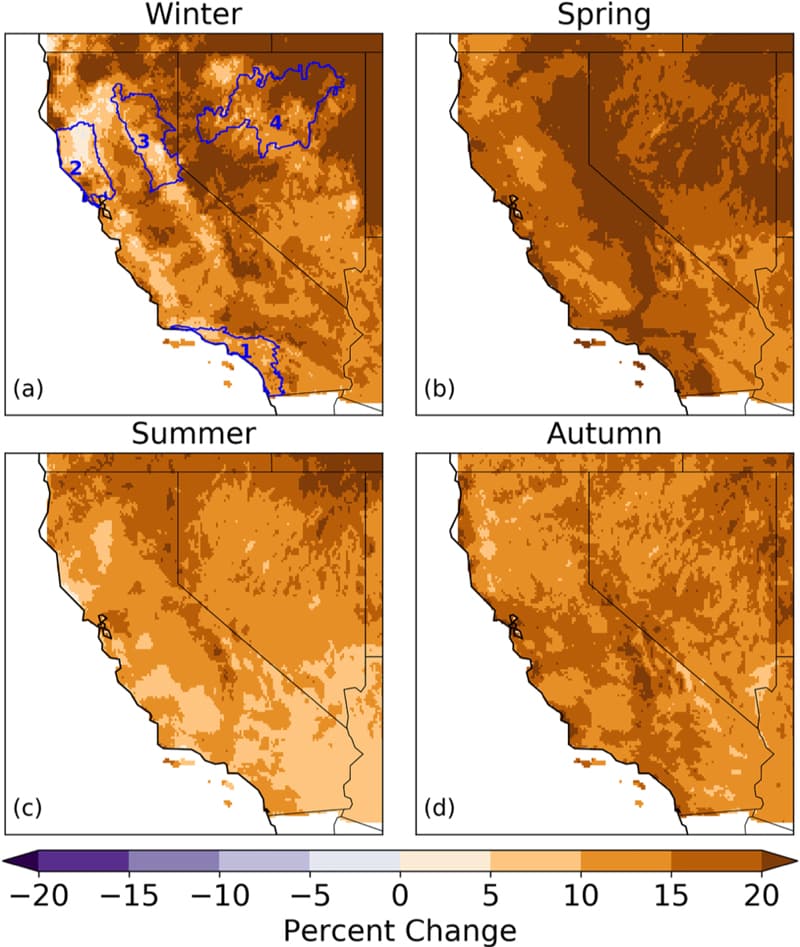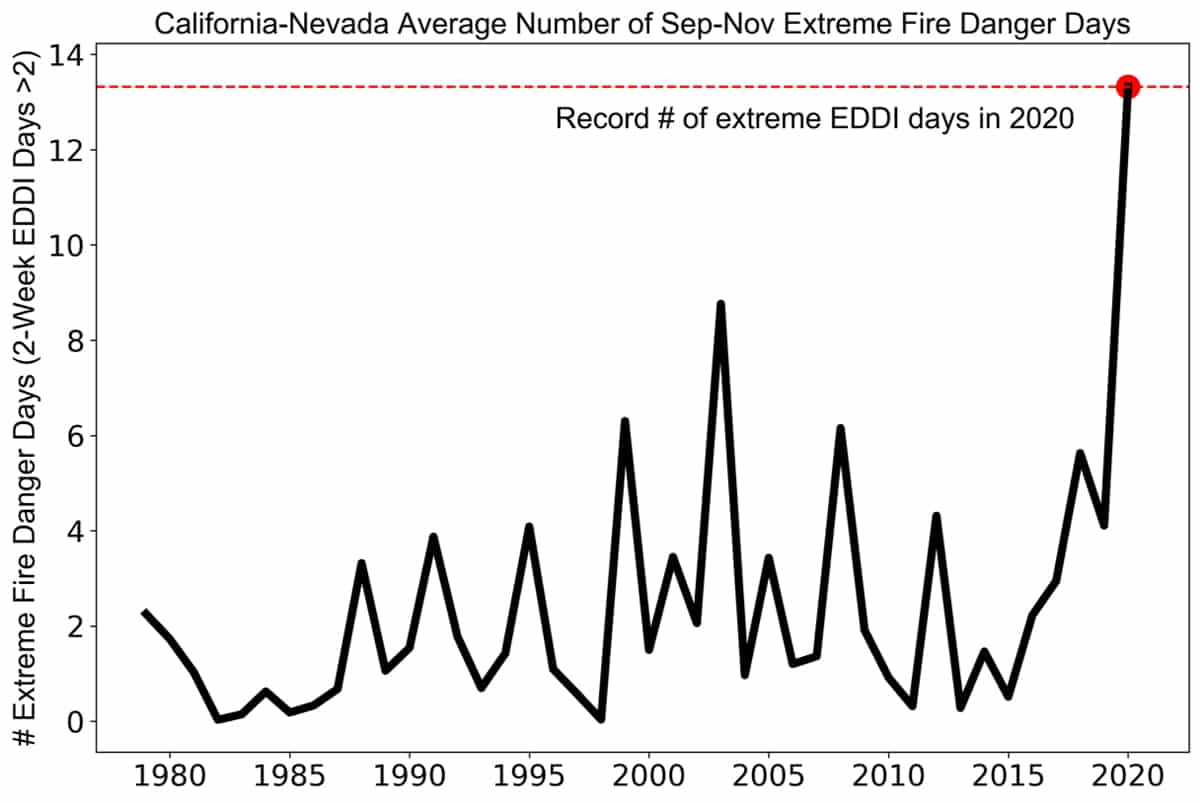Climate change and “atmospheric thirst” to increase fire danger and drought in Nevada and California
Climate change and a “thirsty atmosphere” will bring more extreme wildfire danger and multi-year droughts to Nevada and California by the end of this century, according to new research from the Desert Research Institute (DRI), the Scripps Institution of Oceanography at the University of California, San Diego, and the University of California, Merced.
In a new study published in Earth’s Future, scientists looked at future projections of evaporative demand – a measure of how dry the air is – in California and Nevada through the end of the 21st century. They then examined how changes in evaporative demand would impact the frequency of extreme fire danger and three-year droughts, based on metrics from the Evaporative Demand Drought Index (EDDI) and the Standardized Precipitation Evapotranspiration Index (SPEI).
According to their results, climate change projections show consistent future increases in atmospheric evaporative demand (or the “atmospheric thirst”) over California and Nevada. These changes were largely driven by warmer temperatures, and would likely lead to significant on-the-ground environmental impacts.

Study results show increases of 13 to 18 percent in evaporative demand during all four seasons by the end of the century.
Credit: Dan McEvoy/DRI.
Higher evaporative demand during summer and autumn—peak fire season in the region—means faster drying of soil moisture and vegetation, and available fuels becoming more flammable, leading to fires that can burn faster and hotter,” explained lead author Dan McEvoy, Ph.D., Assistant Research Professor of Climatology at DRI.
“Increased evaporative demand with warming enables fuels to be drier for longer periods,” added coauthor John Abatzoglou, Ph.D., Associate Professor with the University of California, Merced. “This is a recipe for more active fire seasons.”
The research team found that days with extreme fire danger in summer and autumn are expected to increase four to 10 times by the end of the century. Their results also showed that multi-year droughts, similar to that experienced in California and Nevada during 2012-2016, were projected to increase three to 15 times by the end of the century.
“One major takeaway was that we can expect to see a lot more days in the summer and autumn with extreme fire danger related to increased temperature and evaporative demand,” McEvoy said. “Another takeaway was that even in locations where precipitation may not change that much in future, droughts are going to become more severe due to higher evaporative demand.”

California and Nevada on average experienced a record-setting number of “extreme fire danger” days in 2020, as indicated by the line on the graph above. Extreme fire danger days were calculated using the Evaporative Demand Drought Index (EDDI), with methods described in McEvoy et al. (2020). Data source: http://www.climatologylab.org/gridmet.html.
Credit: Dan McEvoy/DRI.
Study authors say that the cumulative effects of increases in evaporative demand will stress native ecosystems, increase fire danger, negatively impact agriculture where water demands cannot be met, and exacerbate impacts to society during periods of prolonged dryness. Several members of the research team are part of the California-Nevada Applications Program (CNAP), and will use these study results to provide resource managers with a view of possible future scenarios.
“These results provide information to support science-based, long-term planning for fire management agencies, forest management agencies, and water resource managers,” said coauthor Julie Kalansky, Ph.D., Program Manager for CNAP. “We plan to work with partners to help integrate the findings from this paper to support building climate resilience.”